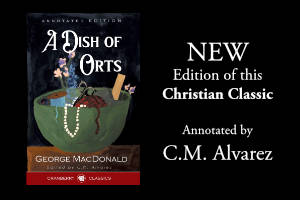In news other than immigration and Mueller, there are rumblings among theologians within the Christian fold, namely, David Bentley Hart and N.T. Wright.
Hart published a translation of the New Testament last year with the intention of keeping the text as close to the original as possible, not smoothing out the text in English. Wright, who also published his own translation in 2011, wrote a review strongly criticizing it. Hart responded, and if you have read any of his work, I’m sure you can imagine the tone. He is not called a polemicist for nothing.
For those who have read the Bible through several times over, one of the dangers is over familiarity with the text. Without a conscious effort to meditate and allow the Holy Spirit to speak to us and teach, it is very easy to read quickly, without chewing through the Word. (This is part of the reason I read Scripture aloud in my devotional time, it forces me to slow down.)
Hart’s intention for his translation is to give the reader a fresh look at the passages As Caleb Lindgren of Christianity Today writes:
To develop a translation that hews to the literal rendering of the Greek Originals as he can, while also retaining the unique and often jarring voice and style of the original authors. As many reviewers have noted, this is precisely the value of Hart’s translation, it allows those familiar with Scripture to read it “again for the first time. . . . A different language is not merely a different vocabulary; in many ways, it is an entirely different system of thought.
Wright’s translation is more of a dynamic equivalence, a thought for thought rendition intended to give the reader an understanding of the text as the original reader would have understood it. The issue is, that this type of translation relies heavily on the interpretation of the translator.
Most of the major Bible translations are performed by a committee, a group of translators that are expert in the language and time period of the book they are translating. Their translations are subject to review and editing before publishing. This review and dialogue process is not present in “celebrity” translations such as Wright and Hart’s New Testament translations and Peterson’s The Message.
Hart takes the opposite approach to translating not even attempting convert the Greek idioms into a somewhat equivalent English thought. Readers are challenged to enter the Greek mindset of the original authors rather than the translator bridging the gap for them.
This is part of the contention between the two men. How they translate is different; but also their understanding is different. Wright himself is not free of controversy. He is known for defining words differently than most would.
A Tempest or a Teacup
Our society has become so inurred to mudslinging in our current political climate, that this disagreement between two men of God probably seems pretty tame. It doesn’t appear to have risen yet to the level of the spat between Norman Geisler and Mike Licona over what began as a disagreement over the historicity of the resurrection of the saints (or the “harrowing of Hell”) at Jesus’ resurrection and then developed into an argument over the meaning of the wording of the membership agreement for the Evangelical Philosophical Society. It certainly doesn’t appear to be as acrimonious as the ongoing feud in the field of physics between the proponents of string theory and Peter Woit. However, strong feelings are stirred.
I just have to say, when we live in a world where pastors use Peterson’s The Message to teach from, which truly wrenches Scripture out of all recognition, are the differences between their two translations really cause for an argument?
Choosing a Translation
This debate highlights the importance of not only using good translations (in other words, not The Message), but also using more than one translation. I love the New Living Translation (NLT), but it is not the only Bible that I use. It is a good idea to have both a translation that uses a dynamic equivalence as well as one with a more formal (word for word) translation.
Translations such as those by Wright and Hart can give a different insight into the passage; however, one should always keep in mind that the translation is their own view. Always compare translations of this sort with others.




